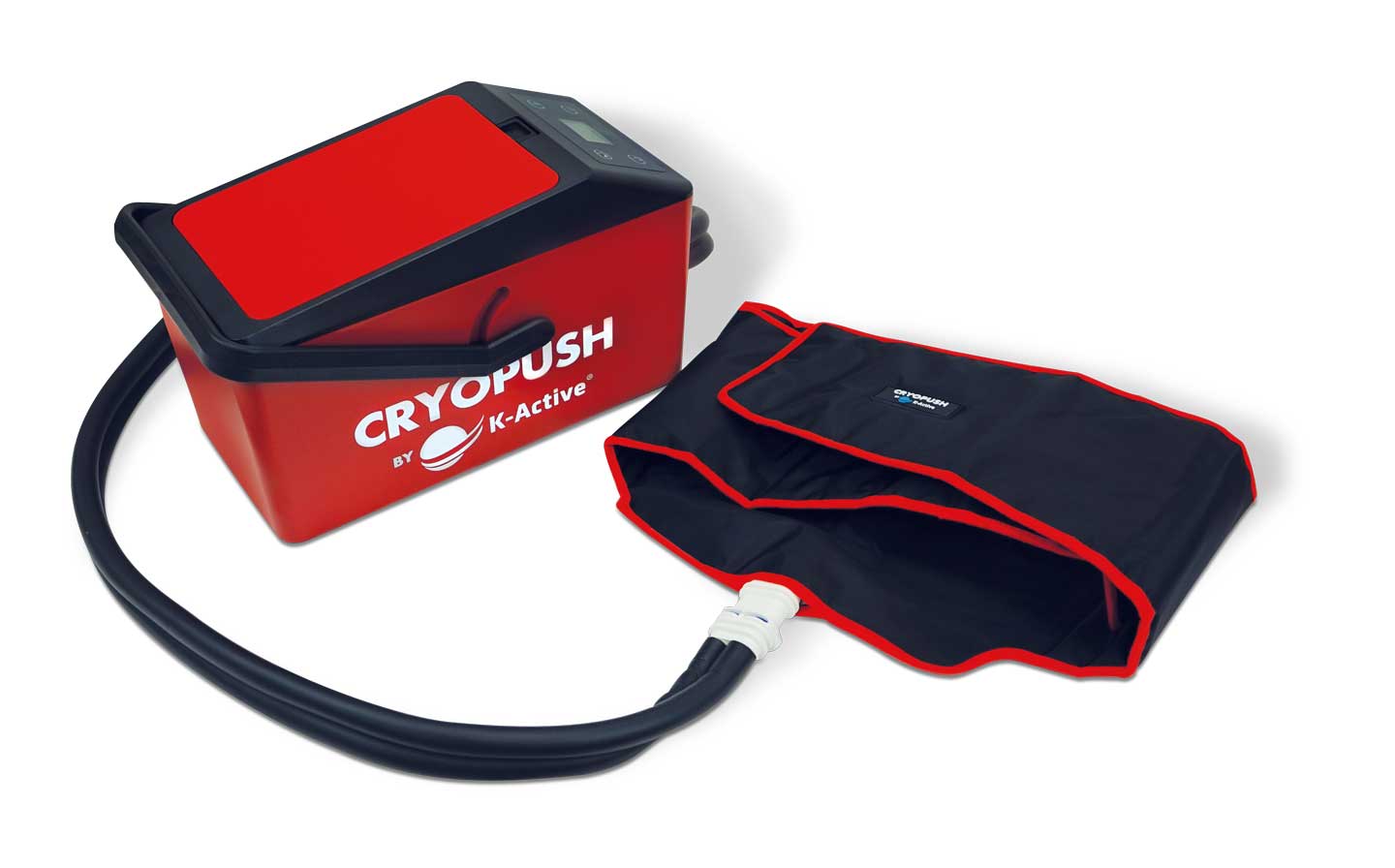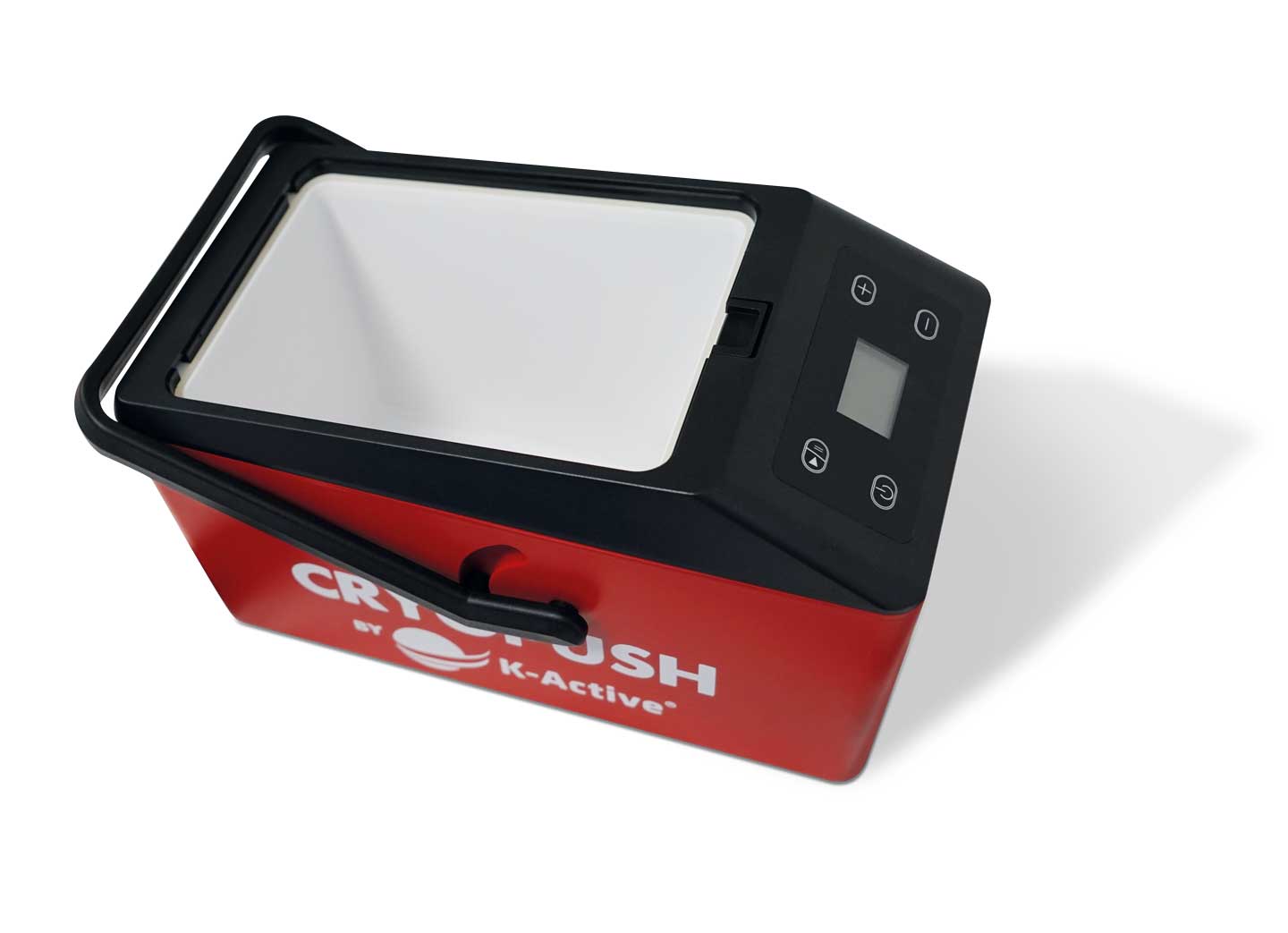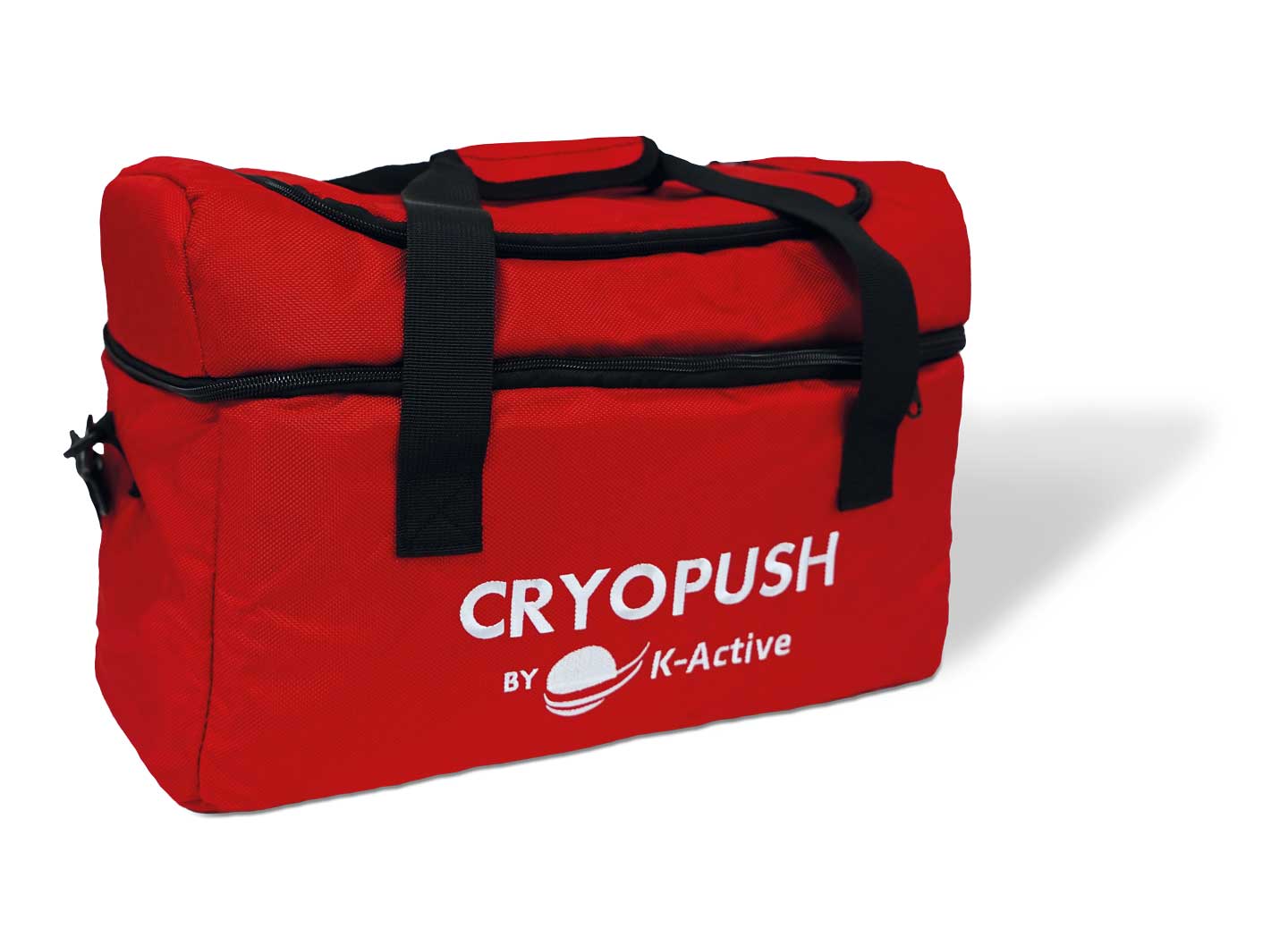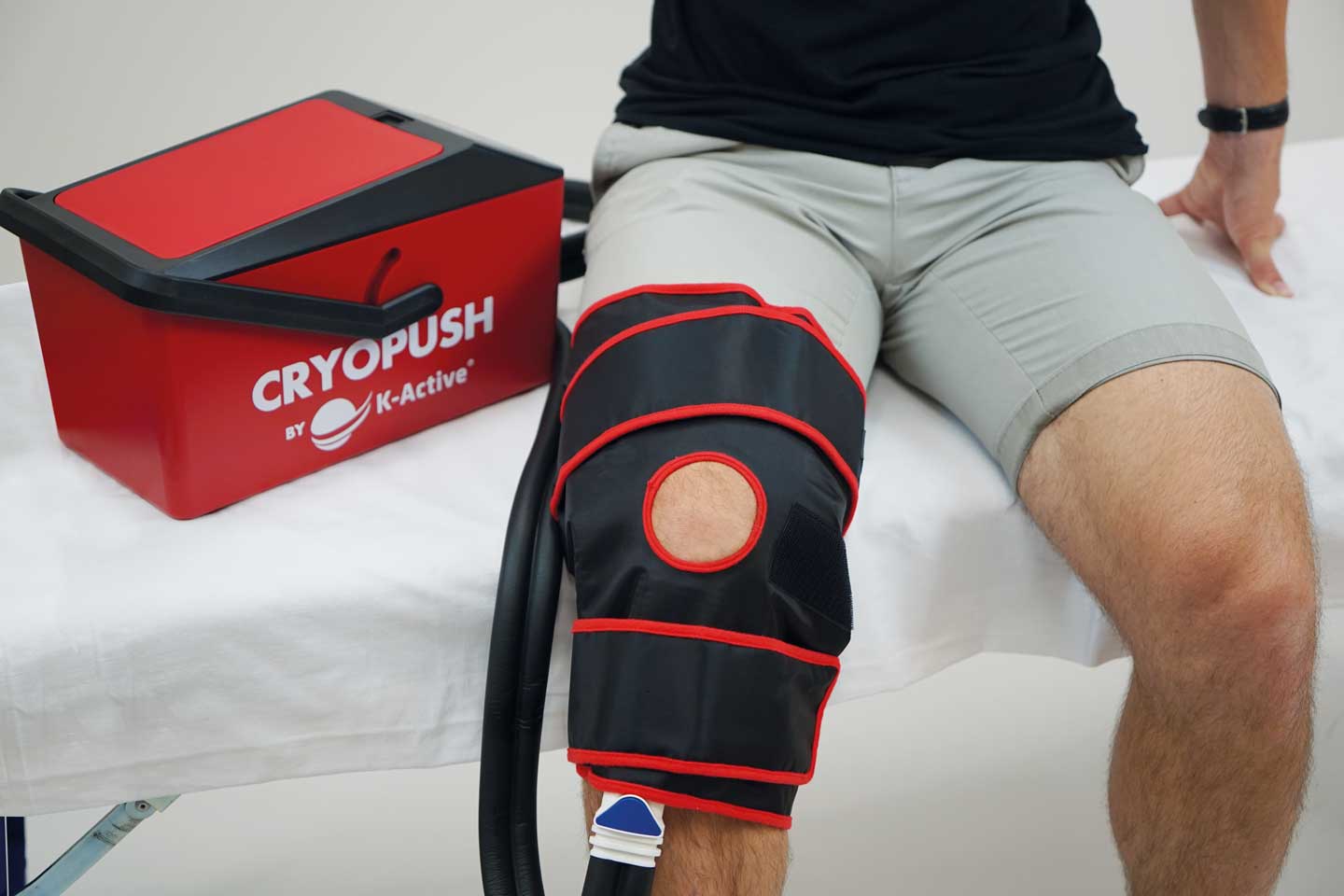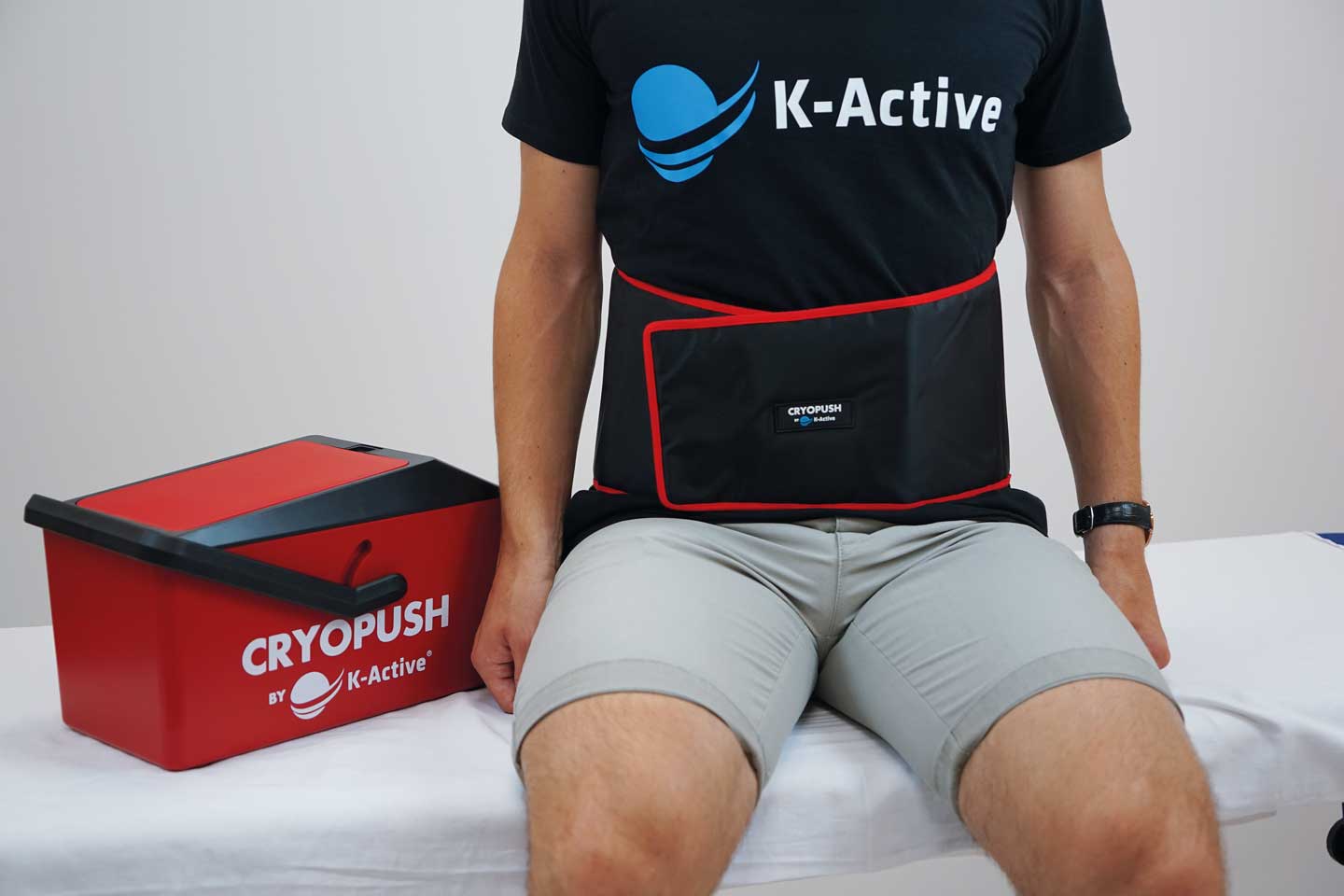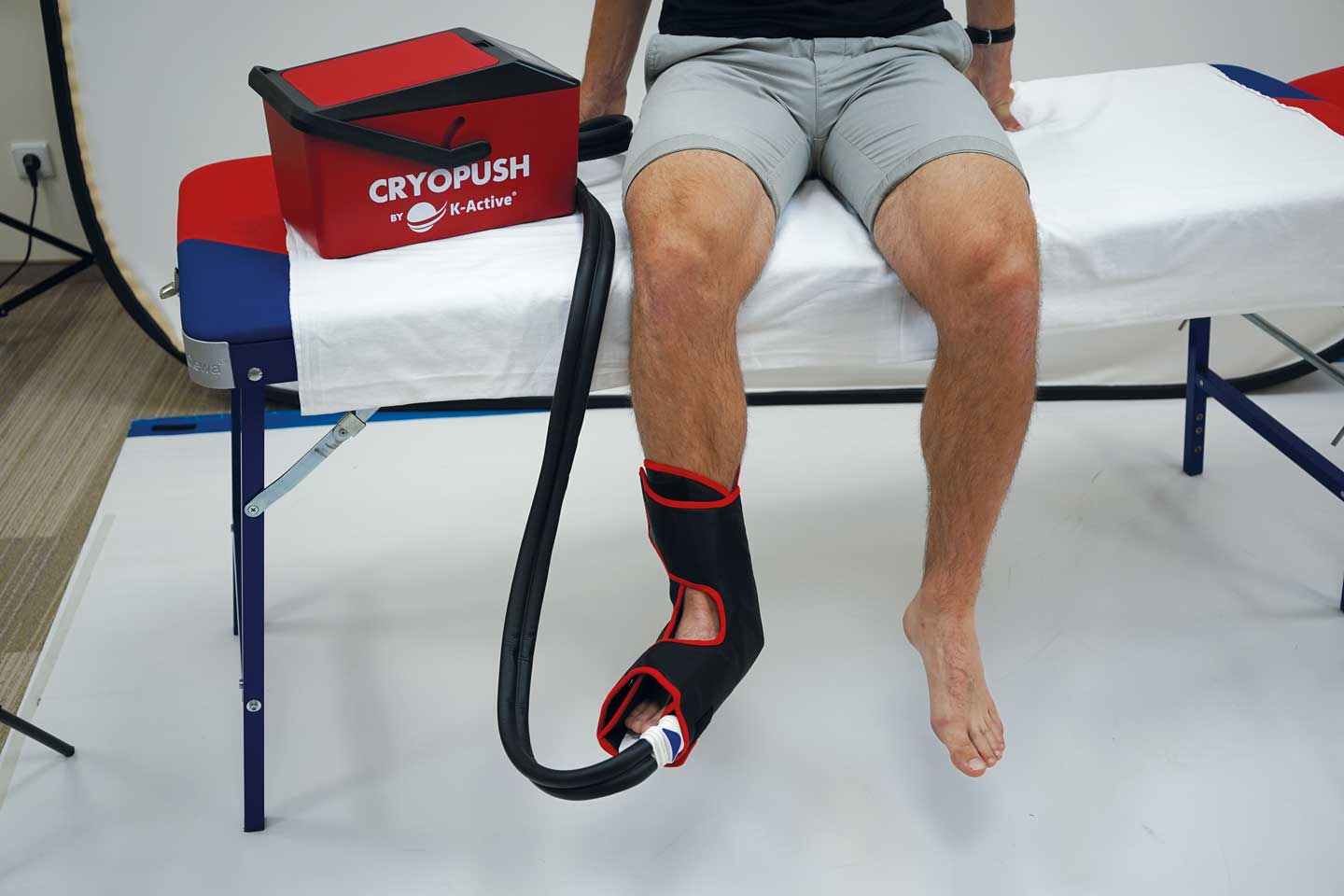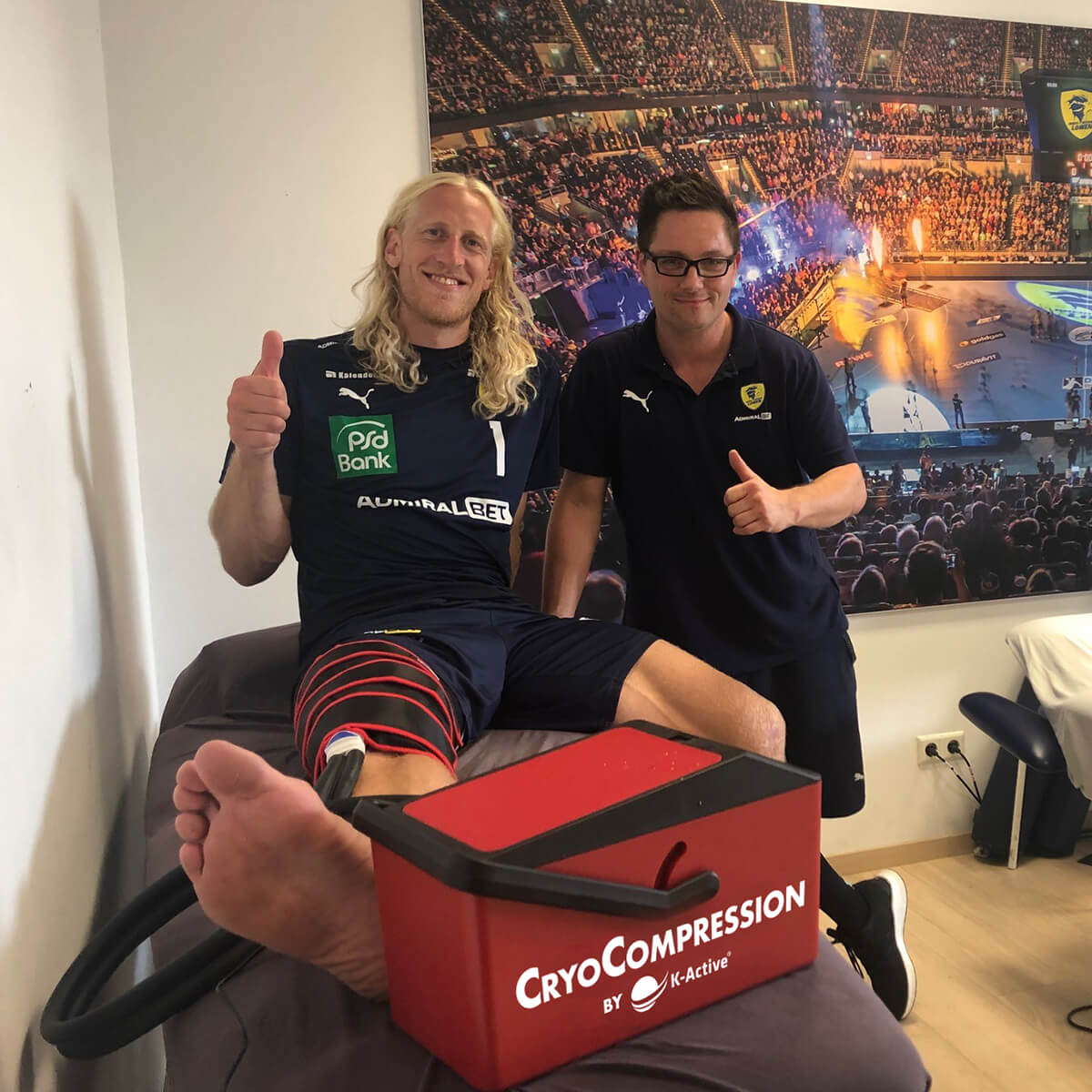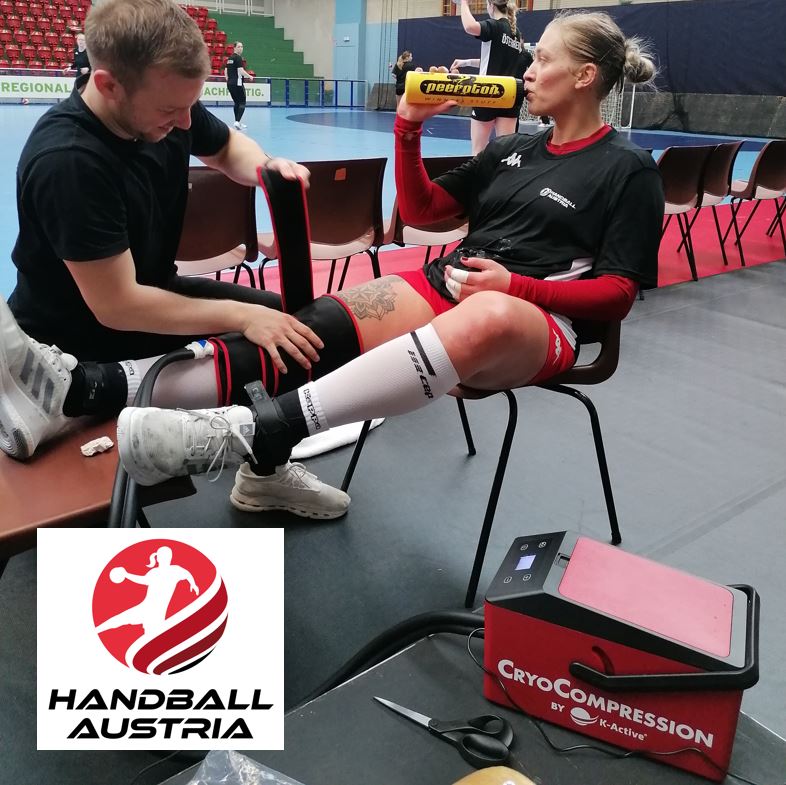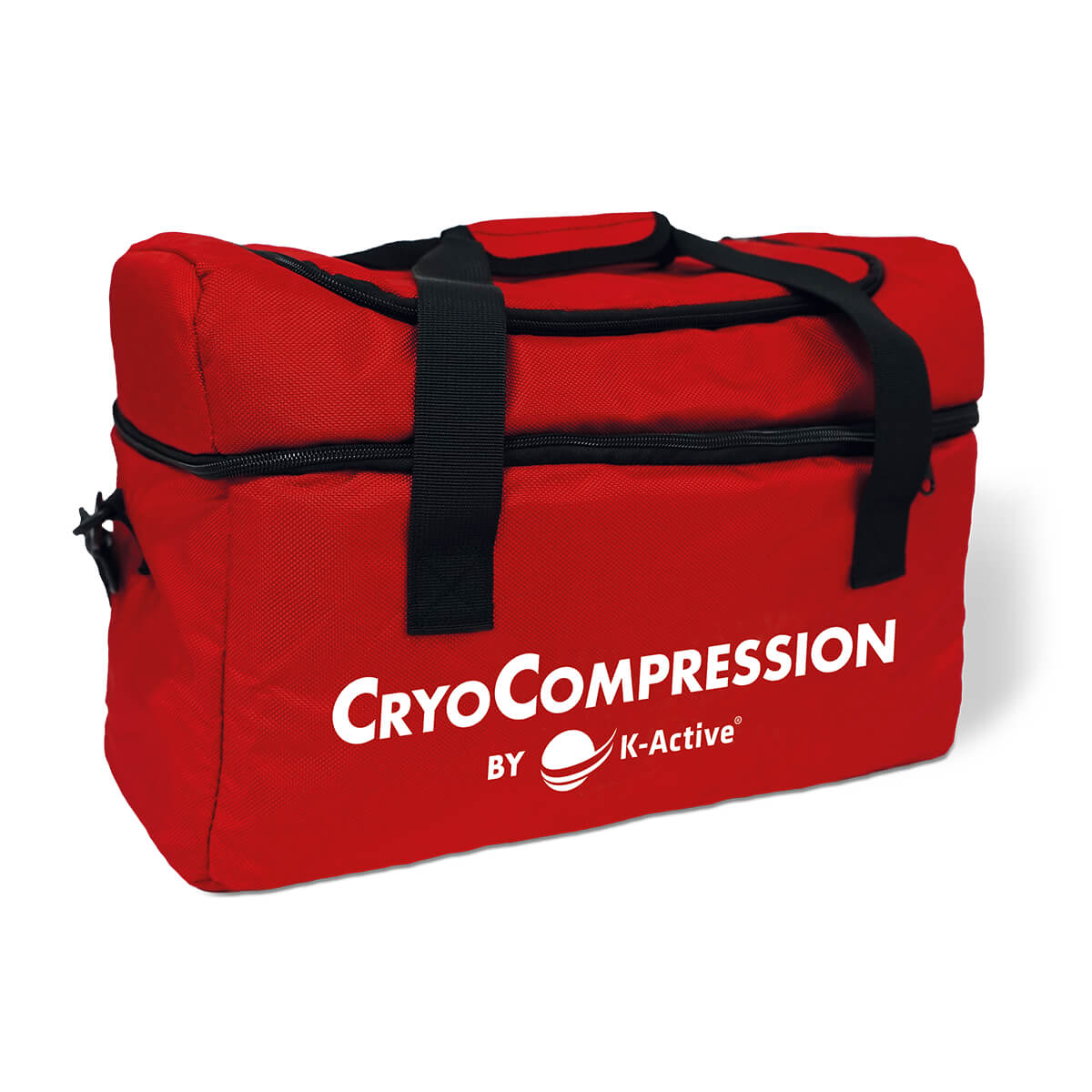CryoPush by K-Active®
CryoPush by K-Active®
€898.00*
Available, delivery time: 1-3 days
Cryopush by K-Active® - The next generation cold and compression system
Background: Find out why cold and compression are so important after injury, surgery, and strain!
The importance of using cold and compression for pain and swelling after strain, injury or surgery is well known: Cold extracts energy from the affected area of the body to reduce inflammation. Cold also temporarily constricts blood vessels, thereby reducing blood flow and weakening inflammatory processes.
Compression helps to reduce swelling and thus increase mobility and ensure that the muscles can be controlled. In addition, pain triggered by swelling is reduced.
There is a solution to the problem of using cold and compression at the same time and in an optimal way: it is called Cryopush by K-Active®.
What is Cryopush by K-Active®?
- Cryopush consists of the so-called cooler and a cuff. Both parts are connected to each other by a tube.
- The cooler is filled with - usually cold - water. If necessary, ice cubes or cooling packs can be added to further lower the temperature.
- The water temperature can thus be controlled individually.
- During the application, the water is pumped through the cuff via the hose to cool the corresponding body area.
- At the same time, the cuff exerts compression on the body part.
- Suitable cuffs for the ankle, knee, hip, spine, or shoulder can be connected.
What are the advantages of Cryopush by K-Active® compared to conventional treatment with ice packs and pressure bandages?
- The Cryopush cuffs completely enclose the affected body part. All-round cooling and compression is thus optimally guaranteed.
- A conventional ice pack can rarely sufficiently enclose or cover the affected area.
- The applied cold can be individually adjusted: simply fill water at the desired temperature into the cooler.
- Cryopush offers dynamic rather than static compression. By pulsing, fluids are more effectively transported out of the body area in general as well as via the lymphatic system.
- The strength of the compression can be adjusted according to individual needs.
- The Cryopush gives your patients a much more professional and high-quality impression than a cold pack attached with bandages.
To ensure that every part of the body can be optimally supplied with cold and compression, there is a suitable cuff for everyone. This enables optimal treatment of the foot, knee, hip, spine, or shoulder. What's more, Cryopush by K-Active® is quickly ready for use: use it in the cabin, practice, and clinic or even at home. Cryopush is ready when you are.
To suit your individual needs, you can choose from nine different programmes. They span three pressure levels (low, medium, and high) and allow for targeted treatment every time.
Tip: Rent Cryopush to your patients:
- Provide your patient with optimal treatment, even at home.
- Optimise the therapy result and thus the satisfaction of your patient!
- Generate additional income along the way.
Product details:
- Pressure level: 60 mmHg - 120 mmHg
- Temperature level: 0° C - 25° C
- Capacity of the cooler: 3.6 litres
Application:
- Fill the compartment of the cooler with water (e.g., chilled or additionally with ice cubes).
- Put the desired cuff on the affected body part.
- Connect the cooler to the cuff via the hose.
- Plug the power supply unit of the cooler into a socket.
- Start the treatment with the desired programme.
Scope of delivery:
- Cooler
- 4 cuffs (ankle, knee, hip, shoulder)
- Connection hose
- Power supply unit
- Carrying bag
- User manual
Studies:
- A prospective, multi-center, randomised trial to evaluate the efficacy of a cryopneumatic device on total knee arthroplasty recovery
- Cryocompression therapy after elective arthroplasty of the hip
- The efficacy of combined cryotherapy and compression compared with cryotherapy alone following anterior cruciate ligament reconstruction
- Cryotherapy With Dynamic Intermittent Compression Improves Recovery From Revision Total Knee Arthroplasty
- Cryotherapy with dynamic intermittent compression for analgesia after anterior cruciate ligament reconstruction. Preliminary study
Safety and Product Resources
| Manufacturer | EU Authorized Representative |
|---|---|
|
K-Active K-Active Europe GmbH Frohnradstraße 2 63768 Hösbach DE – Germany service@k-active.com |
K-Active K-Active Europe GmbH Frohnradstraße 2 63768 Hösbach DE – Germany service@k-active.com |
Login

